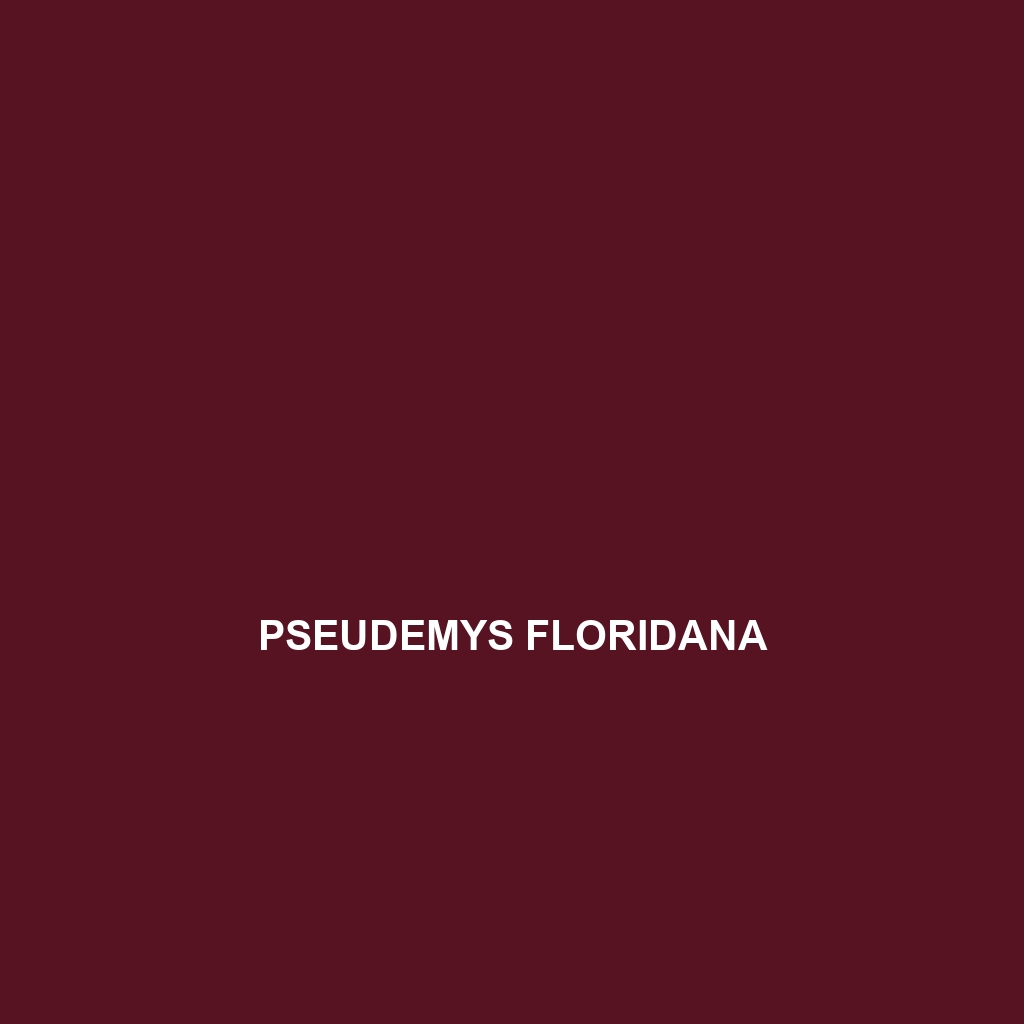<b>Siebenrockiella leytensis</b>, a vulnerable freshwater turtle native to the tropical regions of the Philippines, typically measures 20 to 30 cm in shell length and thrives in slow-moving rivers, marshes, and mangrove swamps. This omnivorous species is known for its unique behaviors, including communal basking and the ability to burrow during dry spells, playing a crucial role in maintaining the ecological balance of its habitat.
Tag: omnivorous turtles
Podocnemis sextuberculata
Podocnemis sextuberculata, known as the six-tubercled river turtle, thrives in the tropical freshwater ecosystems of the Amazon Basin, featuring a distinctive flattened carapace with six prominent tubercles. As a vulnerable species, it plays a crucial role in maintaining aquatic plant populations and serves as prey for larger predators, making it essential to the region's biodiversity.
Pseudemys rubriventris
The Pseudemys rubriventris, commonly known as the red-bellied cooter, is a remarkable freshwater turtle found in the southeastern United States, characterized by its vibrant red or orange plastron and a smooth, dark olive-brown carapace. This omnivorous species thrives in warm, slow-moving waters, playing a crucial role in maintaining ecological balance by regulating aquatic plant growth and contributing to nutrient cycling.
Pseudemys gorzugi
<p><b>Pseudemys gorzugi</b>, commonly known as the Georgia Cooter, is a medium-sized freshwater turtle native to the southeastern United States, primarily found in slow-moving rivers, lakes, and ponds. This species is recognized for its distinct domed shell, elongated neck, and omnivorous diet, playing a crucial role in maintaining the ecological balance of its aquatic habitat.</p>
Pseudemys floridana
<b>Pseudemys floridana</b>, commonly known as the Florida cooter, is a freshwater turtle native to the southeastern United States, recognized for its distinctive dome-shaped carapace and elongated claws. This omnivorous species thrives in warm, humid habitats, primarily feeding on aquatic plants and small invertebrates while playing a vital role in maintaining ecosystem balance.
Pseudemys rubriventris
The Pseudemys rubriventris, commonly known as the red-bellied cooter, is a remarkable freshwater turtle found in the southeastern United States, characterized by its vibrant red or orange plastron and a smooth, dark olive-brown carapace. This omnivorous species thrives in warm, slow-moving waters, playing a crucial role in maintaining ecological balance by regulating aquatic plant growth and contributing to nutrient cycling.
Pseudemys gorzugi
<p><b>Pseudemys gorzugi</b>, commonly known as the Georgia Cooter, is a medium-sized freshwater turtle native to the southeastern United States, primarily found in slow-moving rivers, lakes, and ponds. This species is recognized for its distinct domed shell, elongated neck, and omnivorous diet, playing a crucial role in maintaining the ecological balance of its aquatic habitat.</p>
Pseudemys floridana
<b>Pseudemys floridana</b>, commonly known as the Florida cooter, is a freshwater turtle native to the southeastern United States, recognized for its distinctive dome-shaped carapace and elongated claws. This omnivorous species thrives in warm, humid habitats, primarily feeding on aquatic plants and small invertebrates while playing a vital role in maintaining ecosystem balance.
Phrynops tuberosus
Discover the Yucatán River turtle (Phrynops tuberosus), a medium-sized omnivorous turtle native to the freshwater habitats of Central America, featuring a distinctive tuberculated carapace and a varied diet of aquatic plants, small fish, and invertebrates. With a vibrant habitat in tropical climates, this vulnerable species plays a crucial role in maintaining ecological balance within its ecosystem.
Phrynops williamsi
Phrynops williamsi, commonly known as Williams' River Turtle, is a vibrant species found in the Amazon River basin, characterized by its elongated, patterned shell, diurnal basking behavior, and an omnivorous diet that plays a crucial role in maintaining ecosystem balance. With a vulnerable conservation status, this turtle faces threats from habitat destruction and is notable for its longevity, often living over 50 years in the wild.







